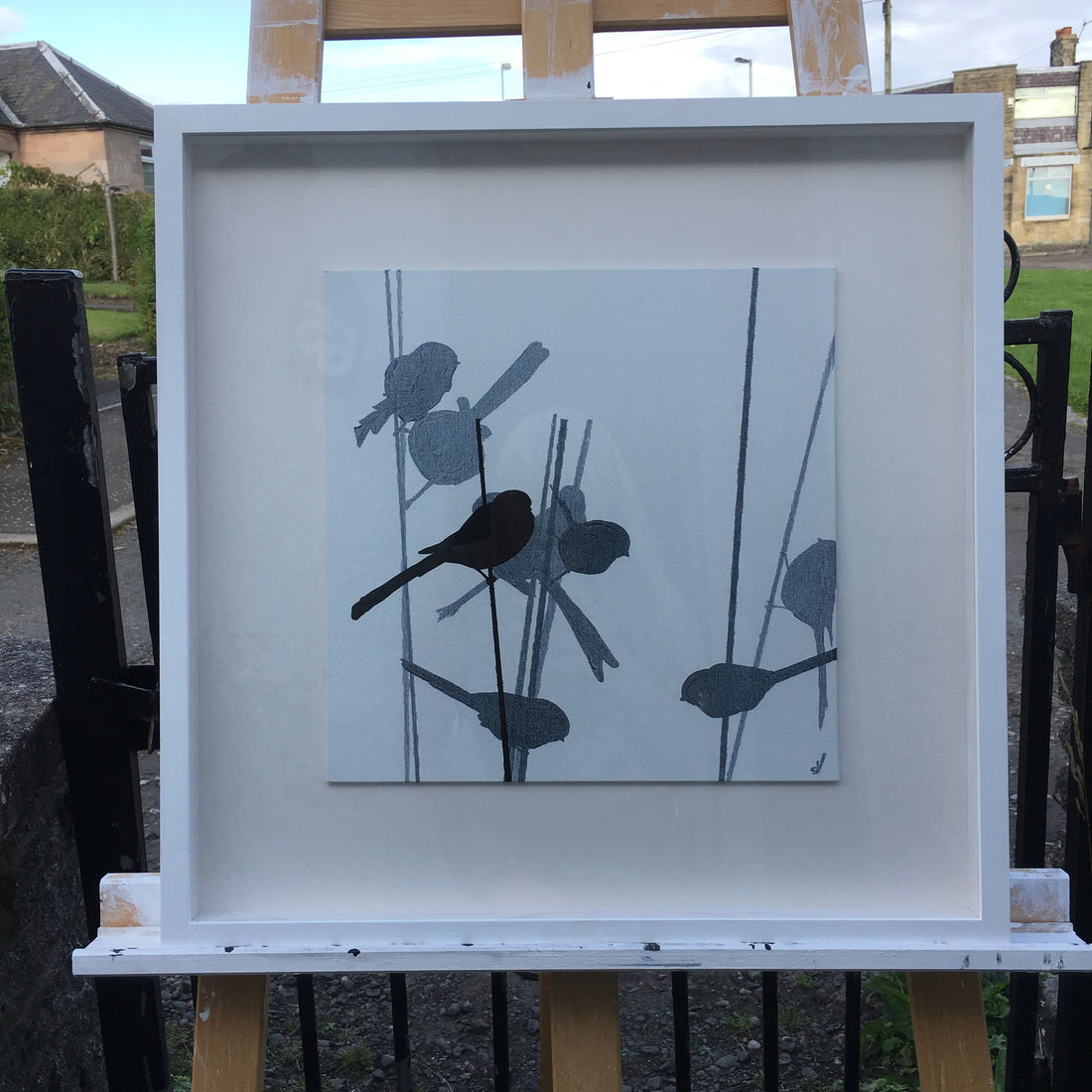
Why do you do black and white paintings of birds using silhouettes?
This is a question I'm often asked and the simple answer is a number of things. The more detailed answer is as it is for most artists I suspect, that no art comes from one idea in isolation. It's always a number of different influences, some serendipitous, some coincidence, that contribute to an idea.

While invigilating my degree show and listening to the visitors discuss my work, I realised that whilst many enjoyed viewing the work, and were buying the work, most people didn’t get what I was trying to say. I realised I wanted to communicate to more people. I wanted to engage people with my art and then educate them about what an amazing natural world we have in the UK. After all why do children always know about tigers and elephants more than the cool animals in the UK?
In my flat in the centre of Edinburgh I had a bird feeder hanging at the window and it occasionally had sparrows or blue tits visit. In 2005 I moved from the centre of Edinburgh to Rural Midlothian and my new house had a big garden. The rural location of my new home meant that when i put bird feeders up in the garden, I had loads of birds I'd not seen before visit the feeders hanging in our garden.
I started getting more interested in the birds in my garden. My father in law is a keen birder and volunteers for the BTO. When we go for walks with my in-laws and I’m always amazed at how he can identify which bird it was just from what appears to be a quick glance in its direction. I've slowly learned that he’s watching where it has been, who else it was flying with, how it flew, its shape and that you can identify birds from their silhouette. I was really intrigued by this idea and how I could use it in my work.
 I looked at how silhouettes had been used elsewhere. I love the illustrations by Jan Pienkowski who uses sihouettes to portray characters and captures their emotions. I also looked at the silhouettes used during the war for plane spotting. I spent time observing birds in the field, drawing them, photographing them and painting them until I got it so that they could be identified by anyone who knew their birds. I scanned my drawings onto the computer and produced screenprints as well as digital prints.
I looked at how silhouettes had been used elsewhere. I love the illustrations by Jan Pienkowski who uses sihouettes to portray characters and captures their emotions. I also looked at the silhouettes used during the war for plane spotting. I spent time observing birds in the field, drawing them, photographing them and painting them until I got it so that they could be identified by anyone who knew their birds. I scanned my drawings onto the computer and produced screenprints as well as digital prints.

 Once I graduated I began using my paints more and the paintings you see today began to develop. I was interested in capturing the essence of a bird without using any colour. I used layers to build up a narrative of what the bird had been doing. I observed and drew birds so that I was able to produce something that any keen birder could identify. Every painting I do I pass by my father in law – if he can identify what bird it is I know I’ve got it right. It takes a lot of time watching the birds in the wild, taking in their environment and then removing all the extraneous information leaving just the shape and movements to capture the essence of the bird.I was delighted this year, at The Rutland Bird Fair, when an national expert in Godwits from the BTO was able to identify the species of Godwit I had painted.
Once I graduated I began using my paints more and the paintings you see today began to develop. I was interested in capturing the essence of a bird without using any colour. I used layers to build up a narrative of what the bird had been doing. I observed and drew birds so that I was able to produce something that any keen birder could identify. Every painting I do I pass by my father in law – if he can identify what bird it is I know I’ve got it right. It takes a lot of time watching the birds in the wild, taking in their environment and then removing all the extraneous information leaving just the shape and movements to capture the essence of the bird.I was delighted this year, at The Rutland Bird Fair, when an national expert in Godwits from the BTO was able to identify the species of Godwit I had painted.
So you can see that although my paintings may look simple and like they don’t take very much time, they are the final piece of a lot of background drawing and research. I know I have done it right when people who really know their birds say "you've got it! you've totally captured them!" and when people who have never heard of the bird, stop and ask more about it because they have been captivated by the image. Then as like the late Tessa Ransford said "when it works it feels like play".
